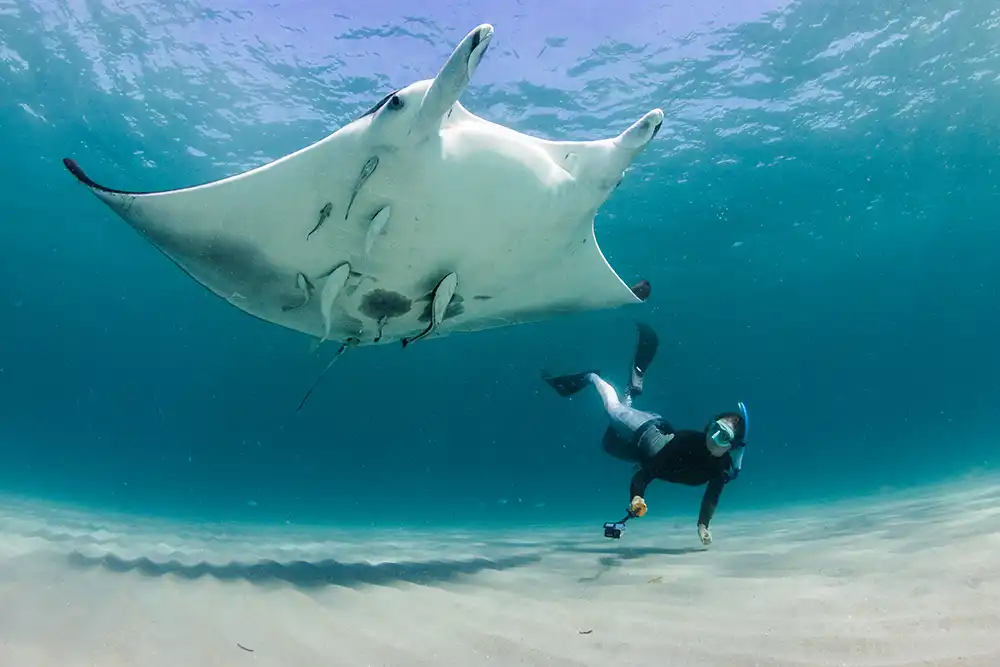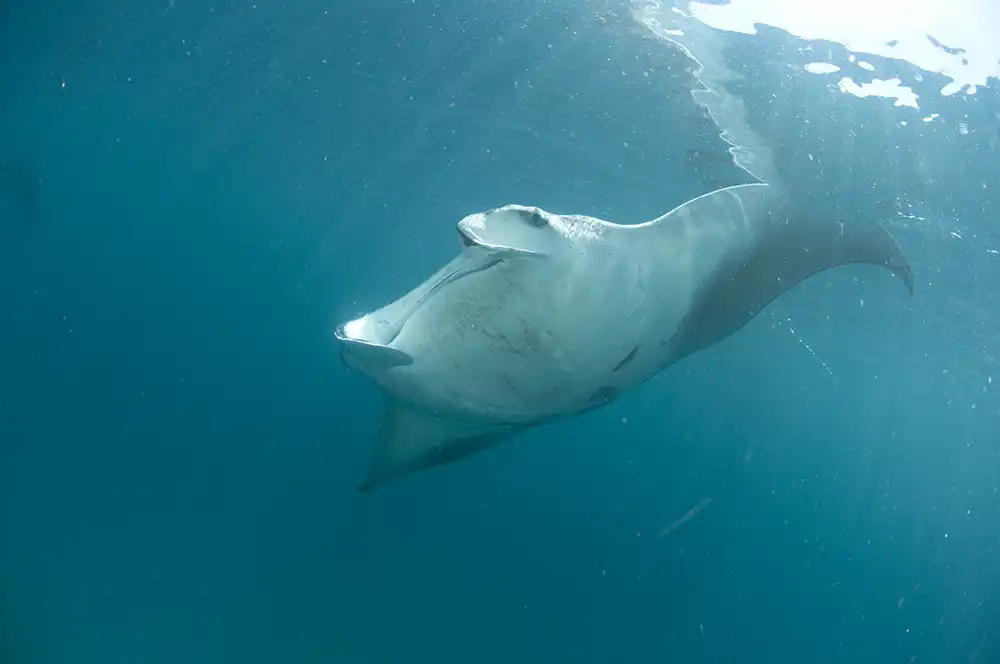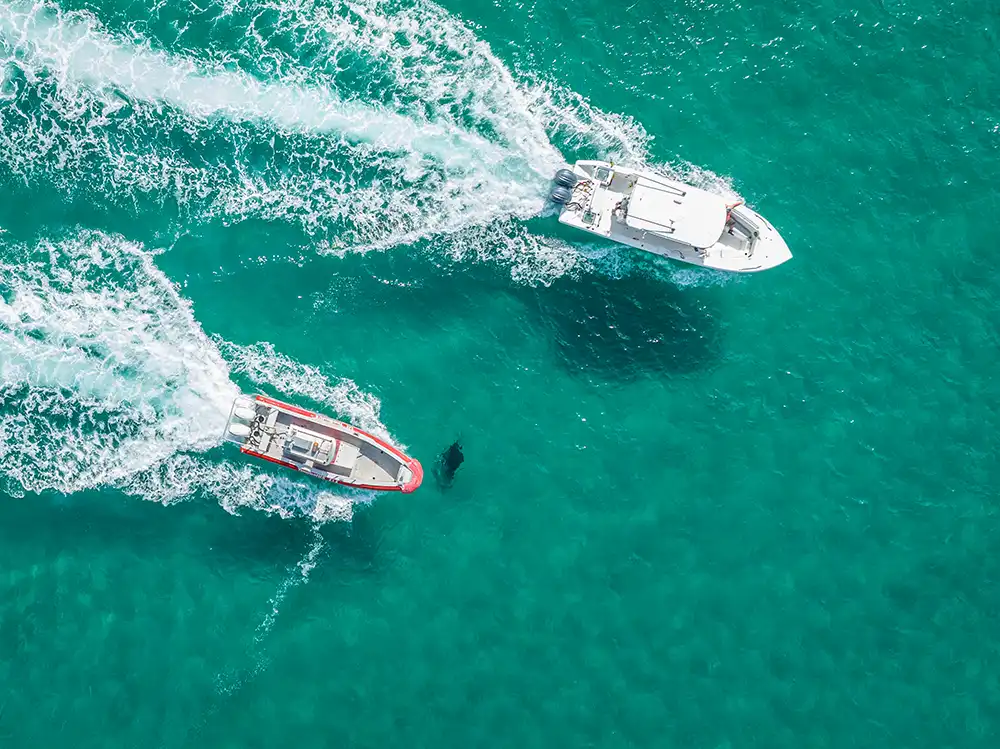
The third manta ray species, Mobula yarae has been formally described by scientists, 15 years after its existence was predicted by famend manta ray skilled Dr Andrea Marshall
Scientists from the Marine Megafauna Basis (MMF) say they’re celebrating the formal announcement of the invention of a 3rd species of manta ray, Mobula yarae, discovered solely in Atlantic Ocean waters.
Printed in Environmental Biology of Fishes, the brand new description represents the end result of a 15-year scientific journey that started with observations by MMF co-founder Dr Andrea Marshall in 2009.
Marshall’s examine revolutionised manta ray science by formally separating manta rays into two distinct species – the enormous oceanic manta, mobula birostris (previously manta birostris; the species have been reclassified in 2017), and the smaller reef manta, mobula alfredi.
In that very same landmark paper, Marshall predicted {that a} third manta ray species existed within the Atlantic Ocean. Though she was assured of her prediction based mostly on years of learning their morphology, proving the hyperlink required genetic affirmation.

Writing in 2022, Marshall mentioned that she had recognised the distinction between Atlantic mantas and different populations instantly, however mentioned that on the time, it will be difficult to persuade others
‘It had been fairly surprising to everybody [in 2009] that there have been two species of manta ray and all of a sudden I needed to argue that there have been three,’ she mentioned.
‘To be trustworthy, I used to be unsure if anybody would consider me. However there was by no means a doubt in my thoughts.
‘That confidence got here from the truth that it had taken me six years to distinguish the primary two species and I knew them inside out at this stage.
‘This manta didn’t appear to be both of them.’

The Atlantic mantas, present in tropical and subtropical waters from the jap United States to Brazil, together with the Gulf of Mexico and Caribbean Sea, have been designated Mobula cf birostris (the place cf denotes uncertainty over the classification) whereas analysis continued.
With formal classification now full, the brand new Atlantic manta ray species has been named Mobula yarae after Yara, a water spirit from Indigenous Brazilian mythology.
Dr Marshall had been working with worldwide collaborators to publish a proper description of the brand new species when she suffered a extreme mind aneurysm and stroke in early 2024.
Whereas she stays on long-term medical depart, M. yarae’s formal description was accomplished by a global analysis crew led by Brazilian scientist Nayara Bucair from the College of São Paulo, with MMF’s Jessica Pate carrying ahead the collaboration and offering Andrea’s information and observations.
‘This discovery confirms what Andrea has lengthy been engaged on,’ mentioned Dr Simon Pierce, MMF Govt Director and co-founder.
‘Andrea’s 2009 taxonomic work on manta species flagged the probably existence of a 3rd Atlantic manta species based mostly on cautious discipline observations, and this formal description brings that work to completion.’
What are the variations between the three manta species?

Mobula yarae shares many traits with each current manta species, however shows a mixture of traits from each of them.
From above, the black dorsal coloration and pectoral fin form appear to be a large oceanic manta, however on the ventral (underside) floor, the lighter color and spot patterns resemble a reef manta
The important thing distinguishing options between Atlantic manta rays and its cousins are:
- Shoulder patches: M. yarae has distinctive V-shaped white shoulder patches, in contrast to the T-shaped patches in M. birostris
- Face colouration: Lighter coloration across the mouth and eyes in comparison with the darker faces of big mantas
- Ventral markings: Darkish spots usually confined to the stomach area, not extending between the gills as in reef mantas
- Measurement: Can develop 5-6 meters like big mantas, although many noticed people are smaller juveniles, and infrequently present in coastal waters like reef mantas
Though the Atlantic mantas show markedly completely different colourations, these aren’t, by themselves, sufficient to mark them as a separate species.
‘It’s a traditional case the place genetic evaluation was wanted to verify what cautious morphological remark instructed,’ defined Pate.
‘The variations are constant as soon as you already know what to search for, however they’re adequately subtle that definitive identification requires experience.’
New manta species underneath menace

In contrast to their wide-ranging relations within the Indo-Pacific, Mobula yarae seems to have a extra restricted distribution within the western Atlantic Ocean, from the jap United States via the Gulf of Mexico and Caribbean Sea to coastal Brazil.
The Atlantic manta ray species has been documented in each oceanic islands and archipelagos in addition to coastal and estuarine areas.
This coastal choice probably makes the Atlantic manta rays extra susceptible to human impacts than their oceanic relations, and they’re recognized to be often caught as bycatch
MMF’s Florida manta ray analysis has documented boat strikes and fishing line entanglement as important threats in Florida waters, and within the Gulf of Mexico, shrimp trawling is probably going a significant supply of mortality for the brand new species.

‘The formal recognition of Mobula yarae is essential for manta ray conservation efforts,’ says Pate. ‘You possibly can’t defend what you haven’t formally recognized.
‘Now that we’ve confirmed that this Atlantic manta ray is distinct, we are able to tailor our analysis and conservation initiatives to guard the species.’
MMF says that its scientists will proceed learning M. yarae populations all through a lot of their vary, with Jessica Pate now main Florida’s manta ray analysis and dealing with worldwide companions to raised perceive the species and its conservation.
Present Atlantic manta ray analysis consists of satellite tv for pc tagging research in Florida waters and ongoing inhabitants monitoring at key websites in Mexico.
‘This formal recognition is just the start,’ mentioned Pate. ‘In Florida, we’re seeing these manta rays in areas with heavy boat site visitors and coastal improvement.
‘Understanding their habitat wants and motion patterns is essential for his or her safety.’
The entire paper, ‘An integrative taxonomy investigation unravels a cryptic species of Mobula Rafnesque, 1810 (Mobulidae, Myliobatiformes), from the Atlantic Ocean’ (2025), by N Bucair, S Hinojosa-Alvarez, A D Marshall, J Pate, et al is printed in Environmental Biology of Fishes.
Discover our extra from Marine Megafauna Basis at marinemegafauna.org, or go to the crew on Instagram @marinemegafauna, Fb @MarineMegafauna and LinkedIn @marine-megafauna-foundation

